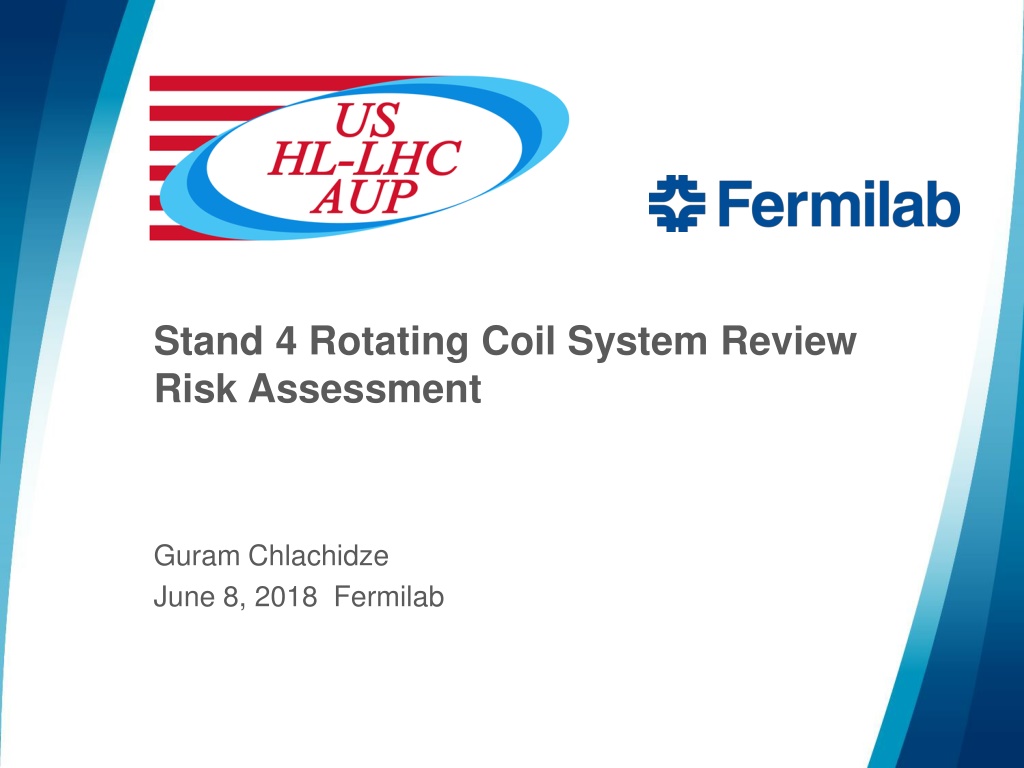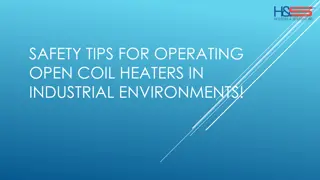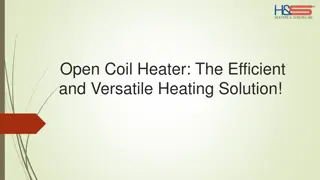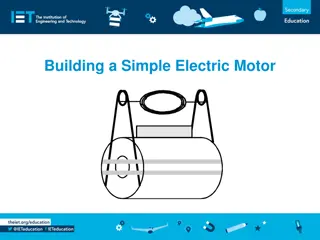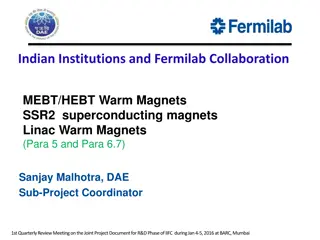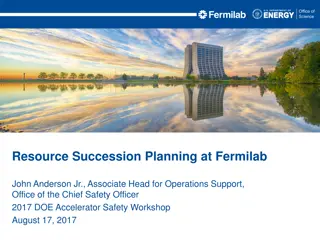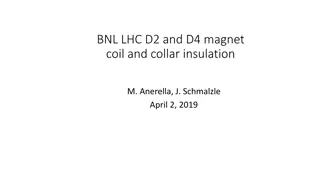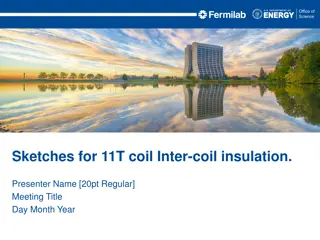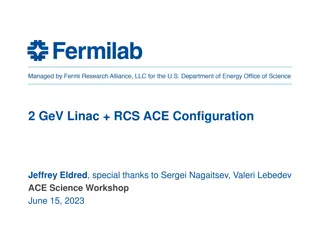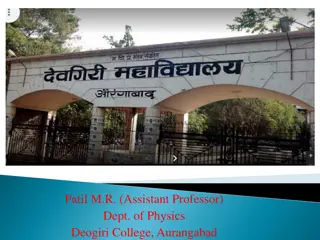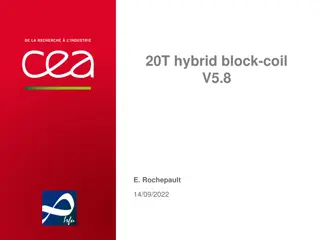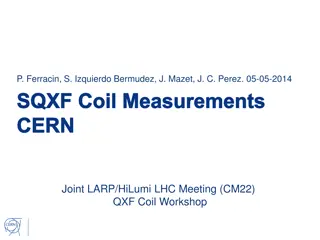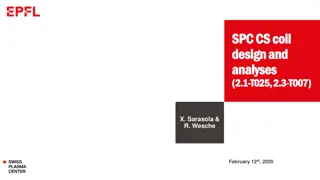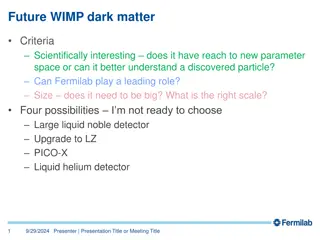Risk Assessment of Rotating Coil System at Fermilab
This document provides a comprehensive risk assessment of the rotating coil system at Fermilab, outlining risks associated with design, operation, cable spooler, probe motion system, and software development. It discusses hardware components, measurement systems, backup plans, and safety measures for personnel. The assessment emphasizes the importance of hiring developers for software application components to mitigate risks effectively.
Download Presentation

Please find below an Image/Link to download the presentation.
The content on the website is provided AS IS for your information and personal use only. It may not be sold, licensed, or shared on other websites without obtaining consent from the author.If you encounter any issues during the download, it is possible that the publisher has removed the file from their server.
You are allowed to download the files provided on this website for personal or commercial use, subject to the condition that they are used lawfully. All files are the property of their respective owners.
The content on the website is provided AS IS for your information and personal use only. It may not be sold, licensed, or shared on other websites without obtaining consent from the author.
E N D
Presentation Transcript
Stand 4 Rotating Coil System Review Risk Assessment Guram Chlachidze June 8, 2018 Fermilab
Outline Risks associated with the rotating coil system design Risks associated with the rotating coil system operation Operation risks of the cable spooler and probe motion system Test and validation Engineering Risk Assessment G. Chlachidze Risk Assessment 2
RC System Design Risks DSA-based measurement system has been used for non- continuous measurements at FNAL last few years Measurement systems with similar hardware components were developed and successfully used at LBNL and ANL Prototype multi-channel system now is available for testing: first measurements were performed with MQXFS1d short model, data analysis is in progress Software system: we plan incremental development of software application components to mitigate risks connected with availability of developers Hiring developer in Magnet Sector is very important Less attractive solution is hiring of a contractor G. Chlachidze Risk Assessment 3
RC System Operation Risks Hardware components of the rotating coil system are commercially available Failed modules could be quickly replaced Most of system components PCB based probes, encoders, slip-rings, etc. are well tested. Still need to demonstrate that long flexible drive could be successfully used for the coil rotation The existing DSA-based system for non-continuous measurements will serve as a backup for the stand 4 measurement system Fast continuous measurement system based on DSP also could serve as a backup in case of stand 4 system failure G. Chlachidze Risk Assessment 4
More Risk Assessment Operation risks of the probe motion system Commercially available hardware components are used in the probe motion system Limiting switches will be installed for controlling the probe motion in the warm bore Probe motion system will be interlocked from the cable spooler to avoid possible cable damage when spooler is not operating properly Operation risks of the cable spooler Commercially available hardware components are used in the cable spooler Limiting switches and the optical sensors will be installed to control the upper stage travel Personnel safety: emergency stop button will be available, side protection shields will be mounted on the cable spoolers G. Chlachidze Risk Assessment 5
Test and Validation DSA-based RC system prototype will be tested with MQXFS1(d/e) short model at VMTF Existing vertical shaft and probe will be used First tests are done with MQXFS1d, data analysis in progress RC system prototype later will be tested with MQXFSA magnet at BNL Ferret system with the flexible drive cable will be used RC system together with the probe motion system and the cable spooler will be tested during the cold mass assembly at Fermilab G. Chlachidze Risk Assessment 6
Engineering Risk Assessment To help reviewers, we performed a standard Engineering Risk Assessment Engineering Risk Element B C D 1 High Risk 10 Chapter A 2 E F 1 G Subtotal Assessment 4 Standard Risk 1 Requirements and Specifications Requirements and Specification Review 4 System Design 5 Engineering Design Review 6 Procurement and Implementation 7 Testing and Validation 8 Release to Operations 9 Final Documentation 3 2 2 2 1 1 1 1 3 2 2 2 2 2 1 1 1 1 1 1 1 16 19 19 16 13 4 7 9 10 10 10 8 1 2 Standard Risk Standard Risk Standard Risk Standard Risk Standard Risk Standard Risk Standard Risk 1 1 3 3 3 3 3 2 1 Project Risk Element J K 3 3 High Risk 25 H 3 I 2 L 2 M 2 N 1 O 3 Subtotal Assessment 19 Standard Risk Engineering Risk Elements A Technology B Environmental Impact C Vendor Issues D Resource Availability E Safety F Quality Requirements G Manufacturing Complexity Project Risk Elements H Schedule I Interfaces J Experience / Capability K Regulatory Requirements L Project Funding M Project Reporting Requirements N Public Impact O Project Cost G. Chlachidze Risk Assessment 7
